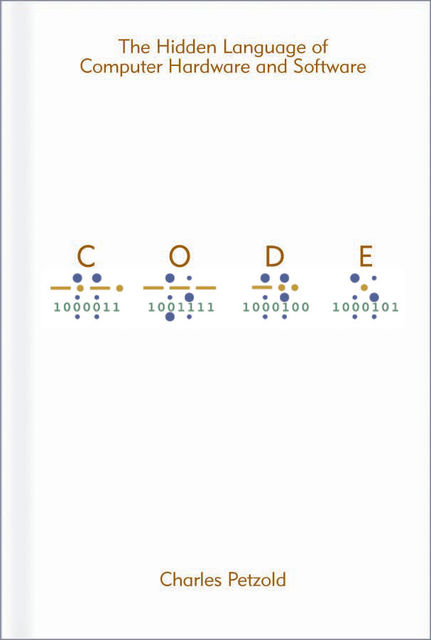
en
Dapatkan aplikasi:
iOS
·Android
Code: The Hidden Language of Computer Hardware and Software
- pinedalbertomembuat kutipan2 tahun yang laluThis table shows the letters that result from each particular consecutive sequence of dots and dashes. To decode a particular sequence, follow the arrows from left to right. For example, suppose you want to know which letter corresponds to the code dot-dash-dot. Begin at the left and choose the dot; then continue moving right along the arrows and choose the dash and then another dot. The letter is R, shown next to the last dot.
Morse code graph
- pinedalbertomembuat kutipan2 tahun yang laluChapter 2. Codes and Combinations
Tbala de codigo morse
- pinedalbertomembuat kutipan2 tahun yang lalu"Memory is like the surface of your desk and storage is like the filing cabinet."
- Anthony Kummerfeldtmembuat kutipan3 tahun yang laluThe word bit, coined to mean binary digit, is surely one of the loveliest words invented in connection with computers.
- Anesu Amon Kasirorimembuat kutipan4 tahun yang laluChapter 2. Codes and Combinations
need further analysis to really grasp what they are trying to say cause im confused
- Ilya Nesterovmembuat kutipan4 tahun yang laluFor example, when we talk to another person, every word we speak is a choice among all the words in the dictionary. If we numbered all the words in the dictionary from 1 through 351,482, we could just as accurately carry on conversations using the numbers rather than words.
- Ультрамаринаmembuat kutipan5 tahun yang laluAs I feared, the reactions weren't favorable. "Oh, I have a book like that," some people would say, to which my immediate response was, "No, no, no, you don't have a book like this one."
- Medionmembuat kutipan5 tahun yang laluA 4-bit processor can add 32-bit numbers, for example, simply by doing it in 4-bit chunks. In one sense, all digital computers are the same. If the hardware of one processor can do something another can't, the other processor can do it in software; they all end up doing the same thing. This is one of the implications of Alan Turing's 1937 paper on computability.
- Medionmembuat kutipan5 tahun yang laluThis is the result of an engineering principle known as TANSTAAFL (pronounced tans toffle), which means "There Ain't No Such Thing As A Free Lunch." Usually, whenever you make a machine better in one way, something else tends to suffer as a result.
- Medionmembuat kutipan5 tahun yang laluYou'll recall from Chapter 13 that you can use two's complements to represent negative numbers.
fb2epub
Seret dan letakkan file Anda
(maksimal 5 sekaligus)

